From the Appalachian Mountains to the Atlantic Ocean, from the Chattahoochee River to the Savannah River, Georgia offers a treasure trove for gemstone enthusiasts.
But many rockhounds dream of finding moonstones but struggle to locate prime spots. The search can be frustrating and time-consuming. Don’t worry – we’ve done the legwork for you.
This article reveals six top-notch locations for moonstone hunting in the Peach State. We’ve carefully researched and vetted these sites to save you time and increase your chances of success. Let’s get started!
How Moonstone Forms Here

Moonstone starts as feldspar, a mineral made of aluminum and silicate. As the rocks cool slowly, two types of feldspar—orthoclase and albite—separate into thin layers. As the layers solidify, they create the stone’s unique internal structure.
The stone’s color, usually milky white with a blue or peach glow, depends on the thickness of these layers and how they catch the light.
When light enters the stone, it scatters between these layers, producing a moonstone’s signature shimmering glow called adularescence. This optical effect makes it appear as if light is floating beneath the surface.
Over millions of years, plate tectonics push the moonstone deposits closer to the surface where they can be mined. The rarity and specific geology needed to create moonstones add to their mystique as one of the world’s most magical gemstones.
The Types Of Moonstone
Our state is a treasure trove of stunning moonstone varieties. These natural wonders come in various forms, each with its own unique charm and allure:
Blue Moonstone

Blue Moonstone is known for its transparent to translucent body with a floating blue sheen on the surface. This sheen, called adularescence, is caused by light reflecting off layers of minerals within the stone.
The most prized Blue Moonstones have a strong blue color and perfect clarity. This makes them stand out from other types, which might be colorless or milky.
What’s special about Blue Moonstone is its ethereal glow. The adularescence creates a soft, shimmering light beneath its surface. This unique optical effect, combined with its rarity, makes it popular among collectors and jewelry enthusiasts.
Rainbow Moonstone
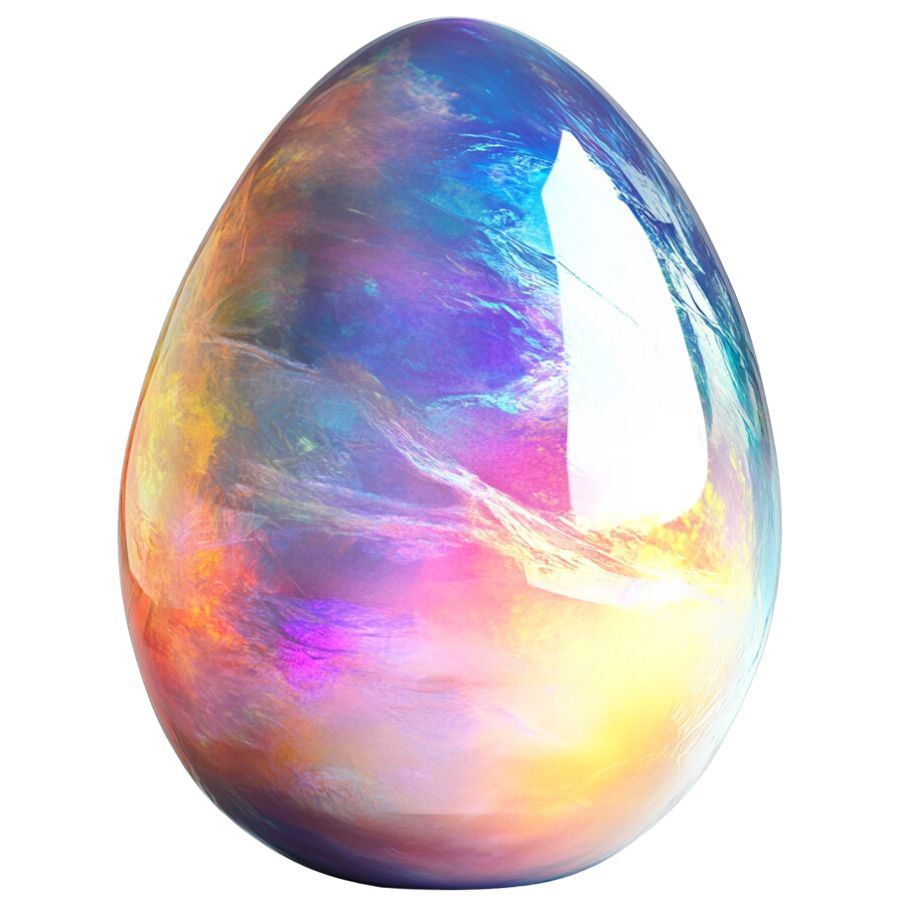
Rainbow Moonstone is famous for its labradorescence, a colorful sheen that shows a spectrum of colors like blue, yellow, orange, and purple. This effect is especially striking against its white body color, giving it a radiant appearance.
Unlike traditional moonstones, Rainbow Moonstones’ play of colors is more vivid and varied. It’s often confused with labradorite but can be distinguished by its pearly sheen and more transparent body.
Some Rainbow Moonstones contain inclusions of black tourmaline, visible in untreated stones. This gemstone gained popularity during the Art Nouveau period and continues to be favored in modern jewelry for its unique optical effects.
Pink Moonstone

Pink Moonstone shows a delicate pink or peach hue, ranging from honey to beige. Its color is soft and subtle, setting it apart from other moonstones with more vibrant shades.
This stone has a pearly or vitreous luster and is generally translucent. High-quality Pink Moonstones often display a white sheen on the surface. Some specimens can even show a cat’s eye or star effect due to their unique internal structure.
Pink Moonstone is one of the rarest varieties of moonstone. Its delicate color and unique optical effects make it highly sought after. Unlike Pink Opal, which is more opaque, Pink Moonstone is characterized by its iridescent sheen.
Star Moonstone

Star Moonstone shows a unique optical effect called asterism, creating a four-pointed star pattern on its surface. This happens because of needle-like inclusions in the stone that reflect light in a special way.
These moonstones are usually translucent to opaque, with colors ranging from colorless to shades of blue, gray, or white. The star effect is best seen when the stone is cut into a cabochon shape.
Star Moonstone is rarer than other types, making it highly desirable. The strongest and most well-defined stars are often found in specimens from Sri Lanka.
Peach Moonstone
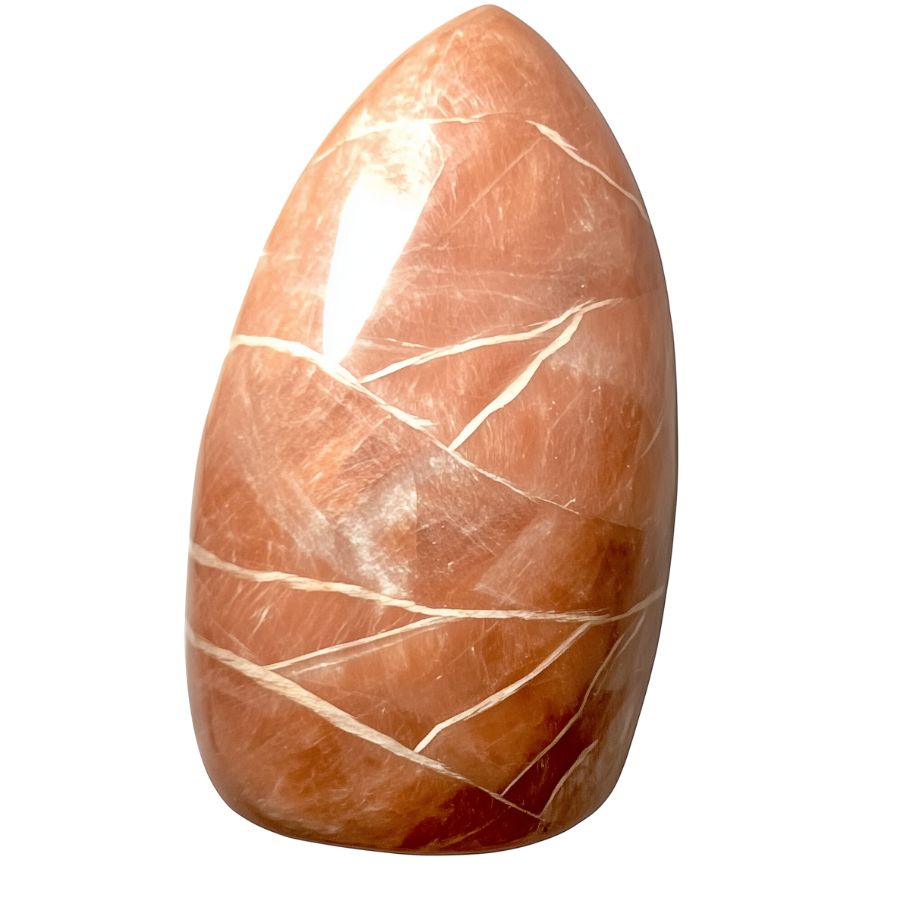
Peach Moonstone stands out with its soft peach or orange hue, ranging from pale to more intense shades. It has a shimmering effect called adularescence, which creates a glowing appearance under certain light.
Unlike other moonstones, Peach Moonstone’s glow is more subdued and warm-toned. It’s generally translucent to semi-transparent, allowing light to pass through and enhance its beauty.
What’s special about Peach Moonstone is its rarity. This scarcity makes it desirable among collectors and jewelry makers.
Its warm tones are particularly favored in designs aiming for a soft, romantic look. The unique color and rarity of Peach Moonstone set it apart in the world of gemstones.
Brown Moonstone

Brown Moonstone has a warm, earthy color that ranges from light honey to deep chocolate brown. It’s translucent to opaque and shows the typical moonstone glow, caused by light scattering between layers of different minerals inside the stone.
What makes Brown Moonstone unique is its rarity compared to other colors like white, gray, and rainbow. The brown color comes from iron impurities in the stone.
Brown Moonstone doesn’t show a strong play of color or iridescence like other moonstones. Its subtle beauty lies in its rich, earthy tones and soft glow. This makes it a distinctive choice for those who appreciate understated elegance in their stones.
Cat’s Eye Moonstone

Cat’s Eye Moonstone is known for its striking appearance. It has a translucent body with a narrow band of light that moves across the surface, looking like a cat’s eye. This effect, called chatoyancy, is caused by tiny needle-like inclusions in the stone.
What sets it apart from other moonstones is this cat’s eye effect. While other moonstones might have a blue sheen, Cat’s Eye Moonstone is all about this moving line of light.
The chatoyancy in Cat’s Eye Moonstone is highly sought after. It’s more valuable than standard moonstones because of how rare it is to find high-quality pieces with strong chatoyancy. This unique look makes it a favorite among collectors and stone enthusiasts.
Green Moonstone

Green moonstone captivates with its soft, pastel green hue and subtle white sheen. Unlike other moonstones, it often displays a velvety texture that’s pleasing to both eye and touch.
Each green moonstone is unique, with color variations ranging from faint green streaks to more pronounced green hues within a milky white base. This diversity means no two stones look exactly alike.
The stone’s green color comes from its high nickel content, making it a rarer find in the moonstone family. This unique composition sets it apart and makes it a favorite among collectors who appreciate its distinctive appearance.
What Rough Moonstone Looks Like
It’s important to understand what a rough moonstone looks like to know what you’re looking for. Here are a few things to keep an eye for:
Check for a Glassy or Waxy Luster

Look for a shiny surface. Moonstone usually has a glassy or waxy luster. It might not sparkle like a diamond, but it has a soft glow.
Hold it up to the light and see if it catches a gentle sheen. If you spot that smooth, silky look, you might have found one.
DON'T MISS OUT ON ANY GREAT FINDS!
While you're out searching for Moonstone you're going to find a lot of other interesting rocks and minerals along the way. The last thing you want to do is toss out something really interesting or valuable. It can be easy to misidentify things without a little guidance.
We've put together a fantastic field guide that makes identifying 140 of the most interesting and valuable rocks and minerals you will find REALLY EASY. It's simple to use, really durable, and will allow you to identify just about any rock and mineral you come across. Make sure you bring it along on your hunt!
Assess the Density and Weight
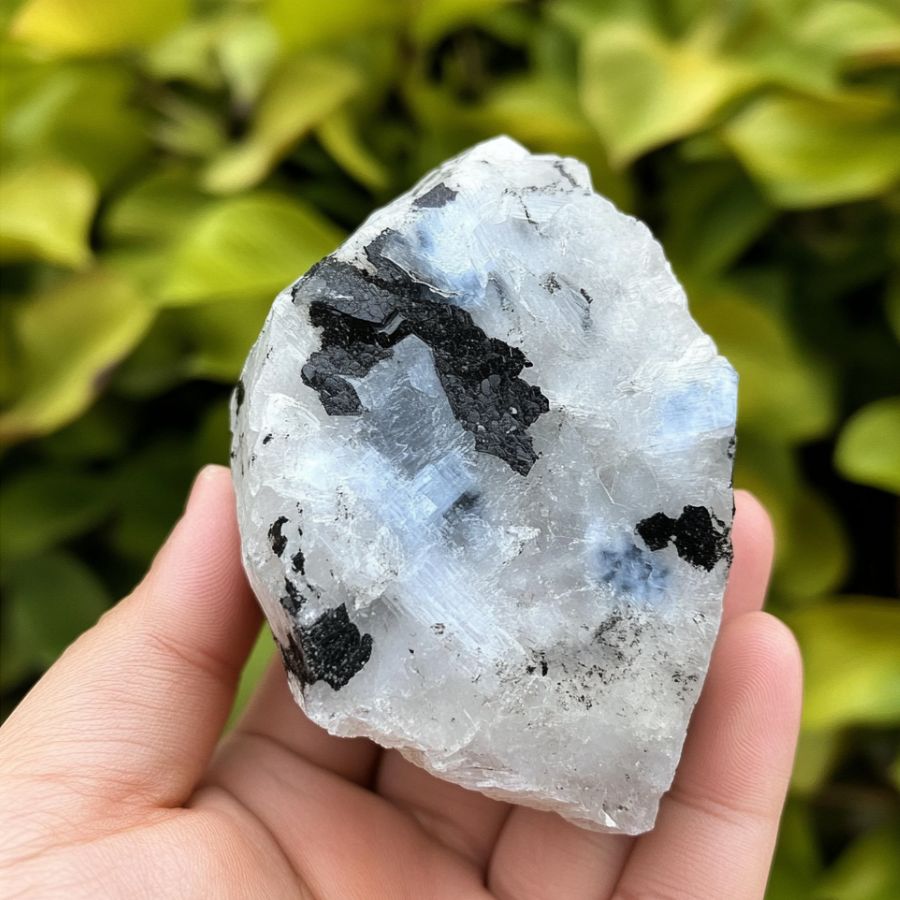
Moonstone feels relatively light for a gemstone. If you pick it up and it feels heavier than expected, it might not be moonstone.
The specific gravity ranges from 2.54 to 2.66, so it should feel somewhat light in your hand.
Notice the Blue or White Sheen

Tilt the stone in your hand. If you notice a blue or white sheen, that’s a good sign. Moonstone has something called adularescence. This is when light reflects inside the stone, creating a soft glow.
It’s one of the key features of moonstone, so keep an eye out for that flash of color.
Look for Rounded Edges

Notice the edges. Moonstone tends to have rounded edges, not sharp ones. This is due to the way it forms in nature.
The rounded shape makes it easier to spot when you’re searching. Keep an eye out for stones with soft, curved edges.
A Quick Request About Collecting
Always Confirm Access and Collection Rules!
Before heading out to any of the locations on our list you need to confirm access requirements and collection rules for both public and private locations directly with the location. We haven’t personally verified every location and the access requirements and collection rules often change without notice.
Many of the locations we mention will not allow collecting but are still great places for those who love to find beautiful rocks and minerals in the wild without keeping them. We also can’t guarantee you will find anything in these locations since they are constantly changing.
Always get updated information directly from the source ahead of time to ensure responsible rockhounding. If you want even more current options it’s always a good idea to contact local rock and mineral clubs and groups
Tips on Where to Look
When you reach the places we’ve listed below, keep these things in mind while searching:
Riverbeds and Streams
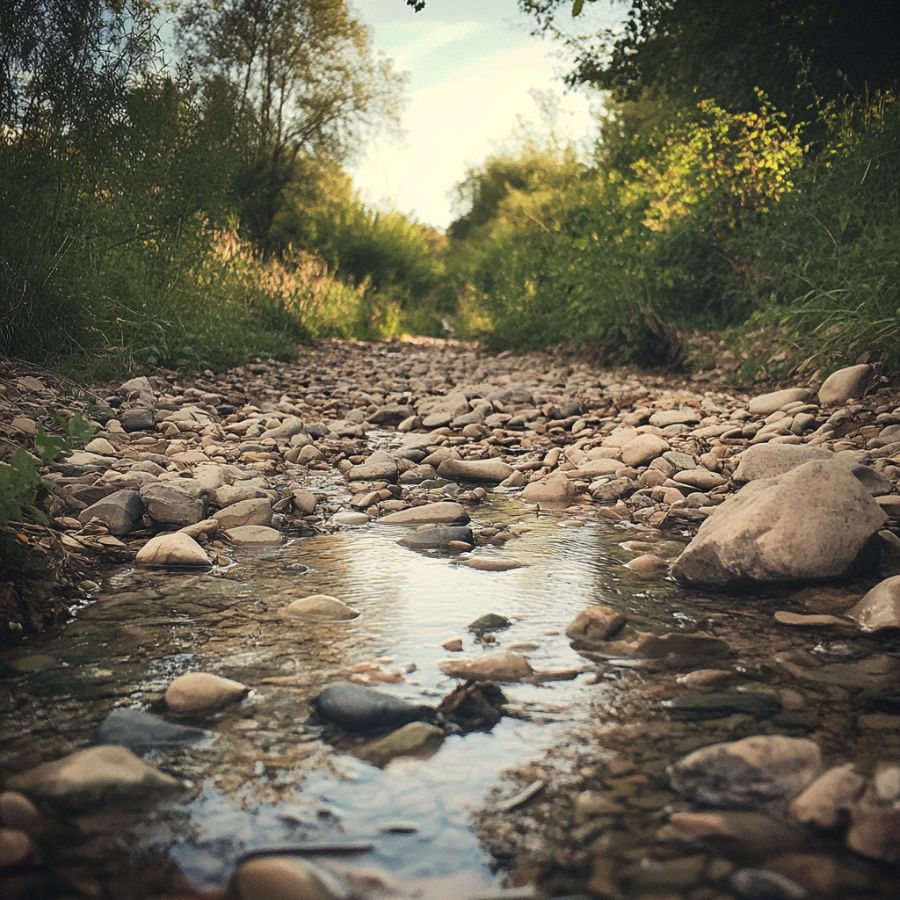
Check out riverbeds and streams. Moonstones can often be found in these areas.
They wash down from the mountains and settle in the gravel. Search along the edges, especially after heavy rain. It’s an easy way to start.
Sandy Beaches

Head to sandy beaches. Look where the sand meets rocks or pebbles. The constant movement of the water helps uncover hidden treasures.
You might find moonstones mixed in with other small stones. The search here can be fun and rewarding.
Old Quarries

Visit old quarries. These places often have piles of loose rocks and gravel where moonstones might be hiding.
The digging and blasting might have already brought them to the surface. Just a little effort and you might find something cool.
Sedimentary Rocks

Check sedimentary rock areas. Moonstones form in these rocks, so they’re likely to be around.
Look for outcroppings or places where the rocks have broken apart. The stones might be easier to spot after some weathering.
The types of Moonstone can you find around the state
In Georgia, two notable types of moonstone can be found: blue moonstone and rainbow moonstone. These beautiful gems are part of the feldspar family and are known for their unique shimmer.
Blue moonstone is characterized by its shimmering blue sheen, which is a result of the unique layering of feldspar minerals that scatter light. This type is often sought after for its beauty and is commonly used in jewelry.
Rainbow moonstone, on the other hand, displays multiple colors simultaneously, including pink, yellow, and blue. This variety is actually a form of labradorite and is prized for its vibrant adularescence, which creates a captivating play of color.
Both types can be discovered in the northern regions of Georgia, particularly in areas with pegmatite deposits
Some Great Places To Start
Georgia offers several excellent locations for rockhounding, particularly for those searching for moonstones. Here are some of the best places in the state to start looking:
Always Confirm Access and Collection Rules!
Before heading out to any of the locations on our list you need to confirm access requirements and collection rules for both public and private locations directly with the location. We haven’t personally verified every location and the access requirements and collection rules often change without notice.
Many of the locations we mention will not allow collecting but are still great places for those who love to find beautiful rocks and minerals in the wild without keeping them. We also can’t guarantee you will find anything in these locations since they are constantly changing.
Always get updated information directly from the source ahead of time to ensure responsible rockhounding. If you want even more current options it’s always a good idea to contact local rock and mineral clubs and groups
Mitchell Creek

Mitchell Creek, nestled in the Thomaston Area of Upson County, is a hidden gem for rockhounds. This southeastern treasure trove lies in the heart of the Piedmont region, known for its diverse mineral deposits.
The creek’s geological makeup is a result of ancient metamorphic processes, creating an ideal environment for moonstone formation.
Moonstones here are often found in the creek’s gravels and along its banks. The water’s natural erosion exposes these ethereal gems, making them accessible to eagle-eyed collectors.
What’s unique about Mitchell Creek is its rich mica deposits, which often accompany moonstone occurrences. The creek also yields other minerals like garnet and quartz, making each expedition a multi-faceted adventure.
Remember to bring water-resistant boots and a keen eye to make the most of your moonstone hunt at Mitchell Creek!
Sheltonville Area

Sheltonville, also known as Shake Rag, is located in the southeastern corner of Forsyth County. This unincorporated community sits near the Chattahoochee River, offering a picturesque backdrop for rockhounding adventures.
Sheltonville’s rich geological history dates back to the Georgia Gold Rush of the 1820s, leaving behind a diverse mineral landscape.
Moonstone seekers can explore the area’s creek beds and gravels, particularly along the Chattahoochee River and its tributaries. Old mining dumps from the gold rush era are also promising spots to uncover these lustrous gems.
The region’s unique geology, shaped by ancient volcanic activity and metamorphic processes, contributes to the presence of moonstone and other fascinating minerals.
Interestingly, Sheltonville was once part of the Cherokee Nation before white settlers arrived in the early 1800s. This historical significance adds an extra layer of intrigue to your gemstone hunting experience in this charming Georgia locale.
Green Farm Area

Nestled in the heart of Gwinnett County, Green Farm in Norcross offers a unique spot for moonstone enthusiasts. This suburban area, part of the Atlanta metro region, hides geological treasures beneath its residential landscape.
The real gem here? Pegmatites – coarse-grained igneous rocks that are a rockhound’s dream.
These pegmatites are the key to finding moonstone in Green Farm. They’re scattered throughout the area, sometimes peeking out at road cuts or construction sites.
Keep an eye out for exposed outcrops during your hunt. The local creeks are also worth exploring, as they might carry eroded minerals from upstream pegmatites.
Hartwell Dam

Located on the Georgia-South Carolina border, Hartwell Dam creates the expansive Lake Hartwell, spanning 55,900 acres. The area around the dam includes various quarries, which are primarily used for extracting construction materials.
Moonstone hunters flock to these quarries, drawn by the promise of discovering moonstones. The geological makeup of the region, rich in granite and other igneous rocks, contributes to the diverse mineral deposits found here.
While exploring the quarries, keep an eye out for moonstones in the exposed rock faces and loose rubble. The dam’s construction in the 1950s dramatically altered the landscape, inadvertently creating prime conditions for gemstone formation.
Hogg Mine
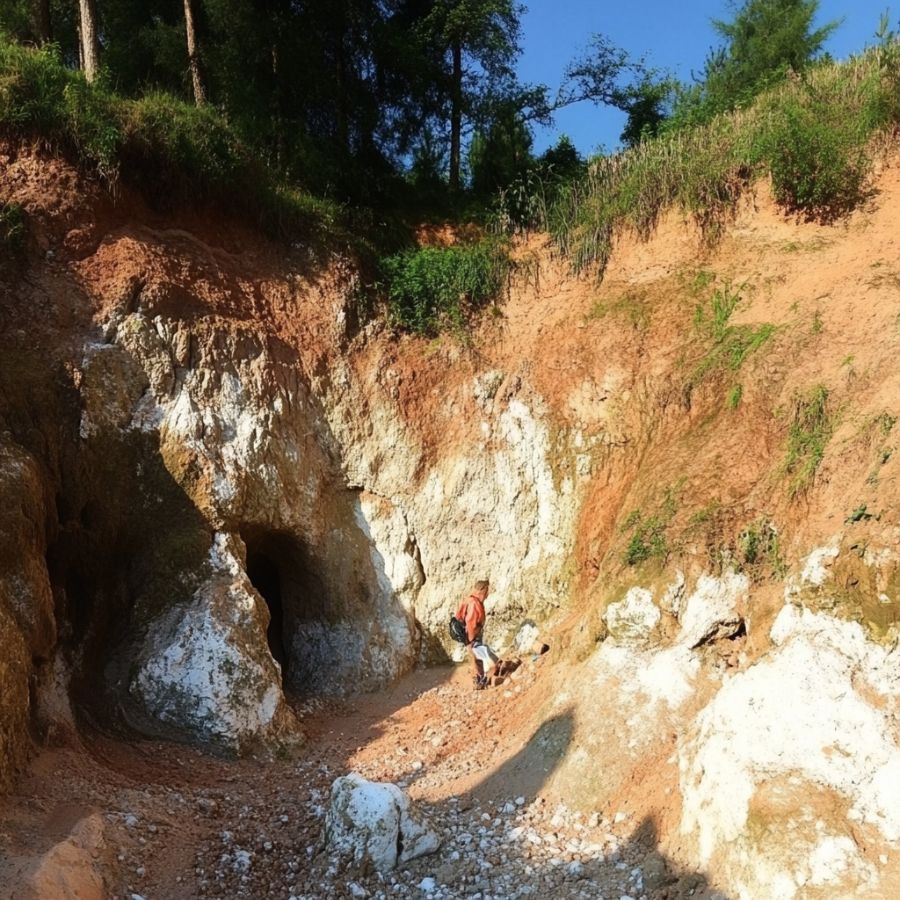
Hogg Mine is a former beryl mine, also known as Oxford Mine, which boasts rich pegmatite formations that make it a hotspot for mineral enthusiasts.
The mine’s unique geology features a rose quartz core surrounded by graphic granite pegmatite, creating an ideal environment for various gemstones, including moonstones.
Visitors can sift through tailings, explore shallow cuts, and examine the saprolite wall to uncover treasures.
While famous for its large beryl crystals, some weighing hundreds of pounds, the mine also yields aquamarine and rose quartz. Moonstone hunters will find the pegmatite zones particularly promising.
The Hogg Mine hosts regular public digs, allowing rockhounds to try their luck at unearthing these coveted stones. Remember, there’s an entry fee, but the thrill of discovery makes it worthwhile for gemstone enthusiasts.
Places Moonstone has been found by county
After discussing our top picks, we wanted to discuss the other places on our list. Below is a list of the additional locations where we have succeeded, along with a breakdown of each place by county.
| County | Location |
| Forsyth | Lowe farm in Buford Area |


